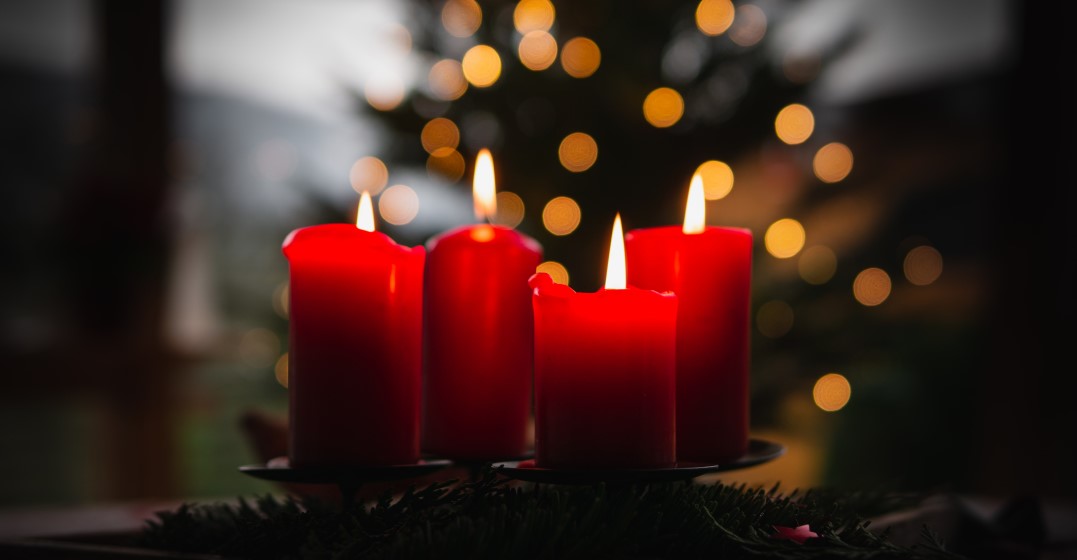What is advent and how does it work?
Published on December 1, 2020 / Updated on November 7, 2022
Advent is a popular Christmas tradition among certain countries and religions (especially German-speaking countries), but where does it come from and how is it celebrated? Adriana explains all!
As an American expat living in Germany, I had never heard of Advent when I moved here. My first Christmas in Hamburg, I was shocked to see the aisles and aisles of Advent calendars that popped up basically immediately after Halloween in all the grocery stores. After asking my German friends how it worked, I discovered that it’s basically a Christmas celebration that extends across all of December where you get one present each day, which is definitely as awesome as it sounds.
In fact, Christmas is a huge deal in Germany. While the streets are lined with Christmas markets full of delicious and delectable treats, privately people celebrate Advent across this entire time period as well. It begins on December 1st and typically involves getting a small present each day from a calendar with 24 numbered doors. If you come from a more religious family, you might also follow the tradition of lighting a candle on the Adventskranz (a Christmas wreath) on each of the four Sundays accompanied by a Bible reading.
From a historical perspective, Advent was developed to celebrate the arrival of Jesus, in other words basically a countdown to Christmas. However, no one knows for sure when the tradition first began. Either way, the original idea was aligned with Lent, where Christians were required to give up something they enjoyed or fasting as part of honoring the sacrifice of Jesus. As time went on, Advent traditions transitioned into a more positive approach with the creation of Advent calendars. The first calendars were plain cards with paper backing and 24 numbered windows that represented the 24 days that lead up to Christmas. Behind each window was a particular religious scene from history that ended with Heiligabend, otherwise known as Christmas Eve, which showed the Nativity scene (the birth of Jesus).
Chrisitian theology also believes that Jesus will set all things right in the world by erasing death and suffering. So Advent also celebrates the time leading up to the Second Coming (when Jesus will reappear on Earth).
Best Christmas movies for learning English
Even though most calendars mark the start of Advent as December 1st, the actual dates vary each year according to where the Sundays fall. Advent technically begins on the fourth Sunday before Christmas and should be celebrated across the next three subsequence Sundays. This means that sometimes it even begins at the end of November. For example, in 2016 Christmas itself was on a Sunday, so Advent lasted a total of 28 days, but other years it can be as short as 23 days.
As the concept behind Advent was based on Christianity, it was intended to celebrate the anticipation leading up to the birth of Jesus, which traditionally involved singing songs at Church like “O Holy Night”, “Comfort Ye My People”, and “Every Valley Shall Be Exalted”. These particular songs directly correspond to passages from Isaiah 40 in the Bible that relate to Advent traditions.
In addition to songs, Church traditions centre around the Advent wreath, which is placed on a podium at the front of the Church for the four Advent Sundays. There is space for four candles, in which one of each is lit on the Sundays across December. The candles are typically dark purple or blue and possibly also a white candle is placed in the middle that is lit on Christmas Eve. The Advent candles should only be lit by a dedicated Church member, usually someone closely associated with the Priest or Pastor. During Advent masses, some Churches also ask members for donations or to participate in specific community-related activities such as volunteering or charities so that Churchgoers help others around them.
Merry Christmas and Happy New Year in 20 Languages!
In recent years, Advent has transitioned from a religious holiday to a general celebration of the time leading up to Christmas. There are Advent calendars for everything you can imagine, including every type of chocolate in existence, jewelry, beer, small toys for children, and even “adult” versions for couples. In Germany, your options are basically limitless for finding a calendar for your specific hobby, although people tend to give them as gifts or buy them for their family as opposed to buying them for themselves.
I personally have even started shipping Advent calendars to my family to the US, because it’s such a lovely concept that hasn’t quite caught on there yet. No matter whether you’re religious or not, it’s certainly the perfect way to brighten up the dark days of Winter with a small gift every day across all of December!
